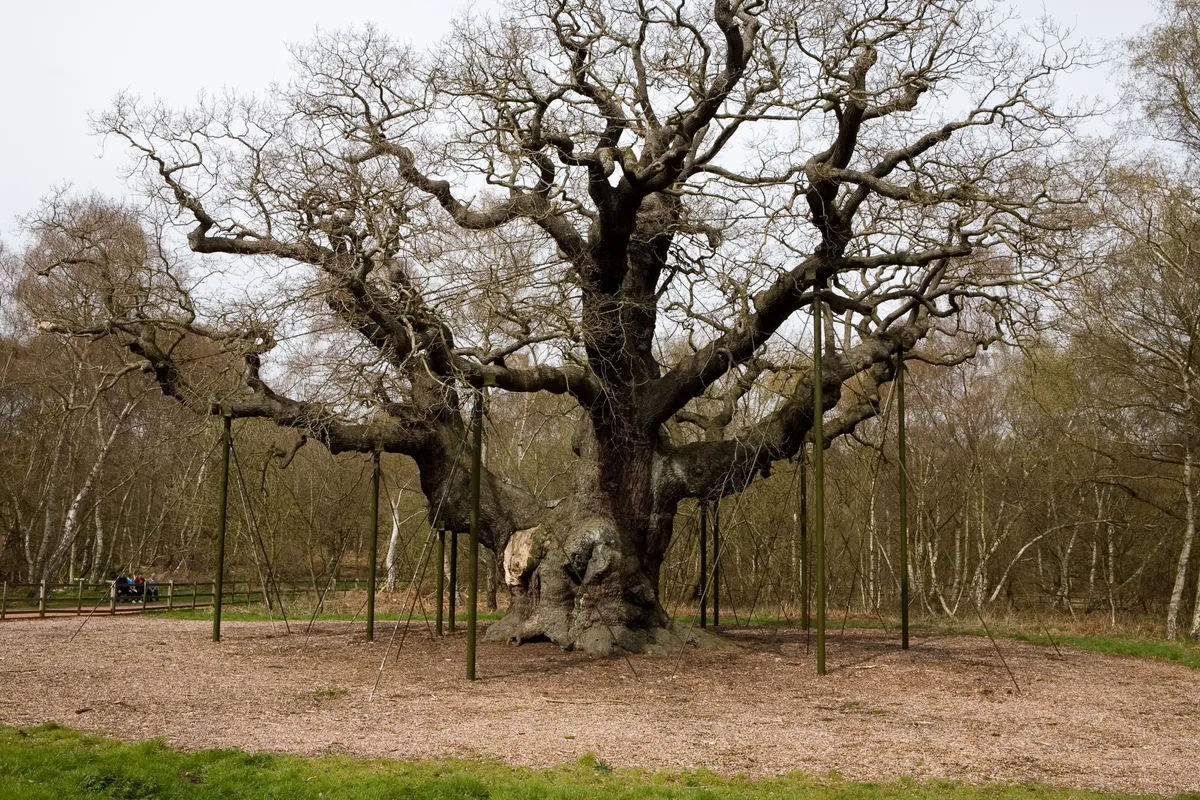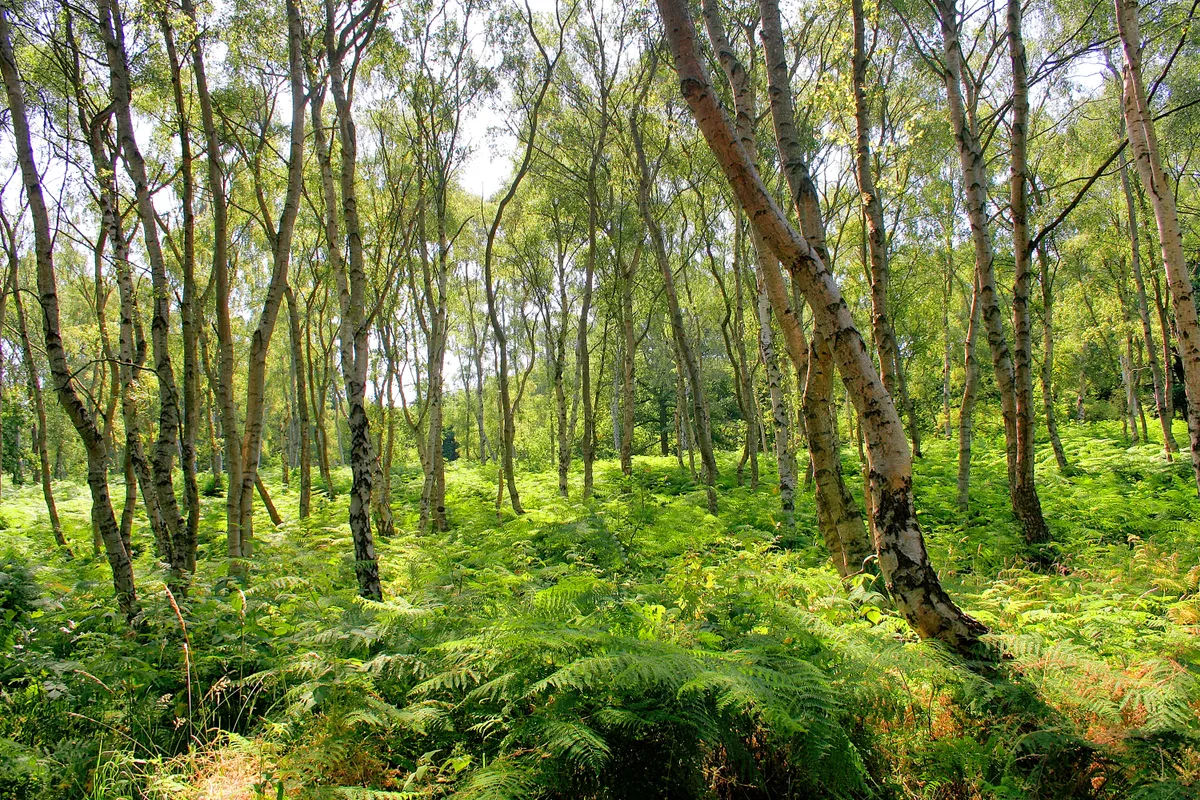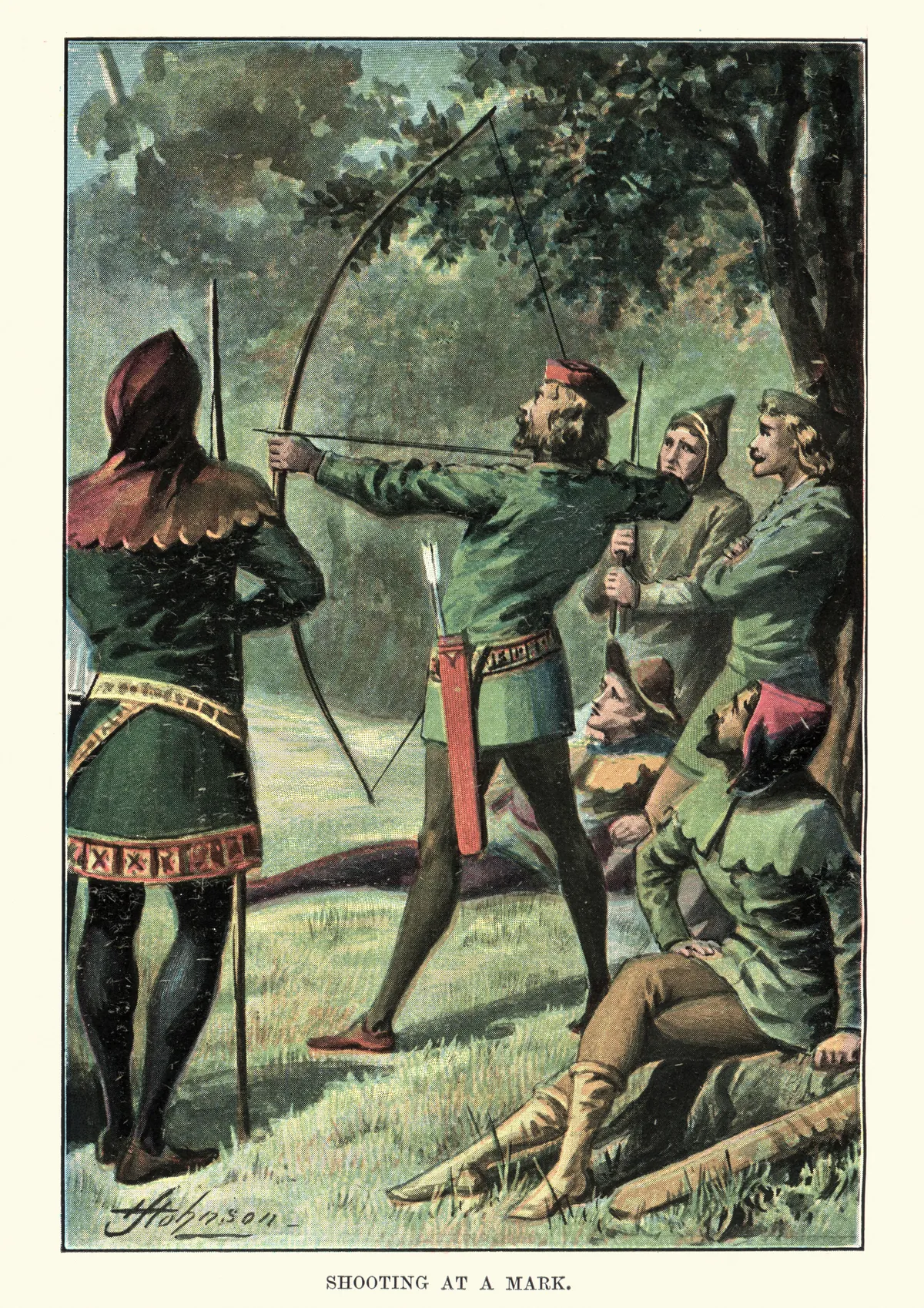From stealing from the rich to give to the poor, our guide to Robin Hood looks at the history of the legend, interesting facts and the best places to visit.
Who was the real Robin Hood?
Robin Hood is an established figure in folklore, but whether he was ever a real person may never be proven either way, especially as Robin or Robert Hood was a common name in medieval England. This was also a common name given to petty thieves, as unsurprisingly the name sounds similar to 'robbing'. Legend has it that Robin Hood and his men lived in Sherwood Forest and used the forest's iconic Major Oak as a hideout, although the tree would actually only have been a sapling when they were roaming the woodland.
Perhaps the most common theory as to who Robin Hood really was names him as the Earl of Huntington, who died in 1198. Ballad writer Martin Parker claimed thus in a text from 1632 named 'A true tale of Robin Hood'.
Was Robin Hood an actual person?
Those who believe Robin was flesh and blood suggest he is buried in Kirklees Hall in Yorkshire, where a grave bears the incription: "Here underneath this little stone / Lies Robert Earl of Huntington / Never archer there as he so good / And people called him Robin Hood / Such outlaws as him and his men / Will England never see again".
Robin Hood is first mentioned in ballads from the 14th century which tell of him as a master of disguise. Robin is mentioned in the company of his Merry Men in early ballads but no wife or family is mentioned besides one relative, the Prioress of Kirklees.
Was Robin Hood a true story?
But what is the evidence that Robin or the characters associated with him actually existed? The first written evidence of Robin’s existence is found in 1377, in The Vision of Piers Ploughman by William Langland, but the surname Robinhood appeared in court records as far back as the reign of Henry III, and could have been a nickname given to people who became outlawed. There is also a reference to a Robert Hod in the York court’s records, and he could have been the original outlaw who sparked the nickname.

As for some of the other characters, Friar Tuck and Maid Marian don’t actually appear in the original six tales; there is a friar but he has no name. Friar Tuck was a real outlaw called Robert Stafford who came from Sussex in the 15th century, and gradually his name was incorporated into the legend. Maid Marian was possibly a French character introduced to the tales through the medium of morris dancing, as folk hero Robin became part of May Day festivities.
But what of Will Scarlet? Well, unlike most of the Merry Men, Scarlet has a final resting place, in the Church of St Mary in Blidworth. However, his gravestone is the apex stone of the old church tower, and whether there is a grave underneath is a matter of conjecture. The fact that Scarlet was an outlaw means that many question why his final resting place is on consecrated ground, although within the church itself you’ll also find the grave of a forester who, while not an outlaw, often found himself in trouble with the law. Perhaps this has led to the legend of Scarlet’s burial.
Where is the real location of Robin Hood?
Robin has always changed with the times, but the one thing that never alters is the fact that he is linked to the gently rolling countryside and ancient woodland of Nottinghamshire – although Yorkshire and Lancashire occasionally try to claim him as their own.

This can partly be explained by the fact that the Royal Forest of Sherwood once stretched as far north as the border with South Yorkshire. However, over the past 500 years or so large tracts of forest and heath have given way to urban development – although there has always been villages, and even towns, within the forest. It can be difficult for us today to comprehend the concept of a royal forest. The term simply refers to the fact that the hunting rights belonged to the crown – the forest itself was never an unbroken swathe of trees.
Location debate?
Supporting the rival counties’ claims, there are references in the six original tales of Robin Hood to both Lancashire and South Yorkshire. In A Gest of Robyn Hode, Syr Richard at the Lee is a character whose name is associated with Lancashire’s Forest of Bowland, while Barnsdale in Yorkshire is also mentioned. But it’s Nottinghamshire that has the greater claim.
There’s no escaping the man in green and his Merry Men in the county even today. They are as bound to the present – in the form of tourist revenue – as they are to the past. Robin Hood is one of Nottinghamshire’s main draw as the Sherwood Forest National Nature Reserve brings in thousands of visitors each year.
Who were the Merry men?
The Merry Men are a group of outlaws who followed Robin Hood in folklore legends. They make an appearance in early ballads and Robin and his men are always depicted in clothes of Lincoln green, a shade so-called because the dyers of Lincoln produced a distinctive verdant cloth by colouring it with woad to give it a blue hue, then overdyeing it yellow with weld.

How has the story of Robin Hood changed over the years?
The stories of Robin Hood are believed to be so loved through the centuries because they are constantly adapted to the tastes of the times. Early versions emphasised Robin's skill with a bow, the later ones mention that he robbed the rich to help the poor.
The size of the band of merry men varies from a small group of around five to 140 strong, according to the telling. Robin’s bow is carved from the wood of a yew tree. Maid Marian, who provides Robin's love interest, was a 16th-century addition to the story.
Robin Hood TV and film adaptations
From Errol Flynn, bounding through Sherwood Forest with his Merry Men, to Kevin Costner’s downbeat and strangely American hero, Hollywood has had a long love-in with the legend of Robin Hood. Swashbuckling hero in Kermit-green tights or grungy outlaw in need of a haircut: over the years Robin has gone through a number of reincarnations and makeovers.
The outlaw has also buckled his swash on the small screen: in the 1980s, Robin of Sherwood gave the story a New Age twist, while a BBC series saw Robin returning from the Crusades.


